If you're reading this, you're probably eager to add some muscle to your frame. Whether you're coming off a sharp cut or just want to stack some mass on your body, it helps to have a stockpile of great gains-related tips in your arsenal. Below, you'll find an incredible assortment of muscle-building advice from some of the best athletes on BodySpace.
Implement one or more of these strategies into your routine and watch your muscles grow!
Focus On More Food
You probably know that clean nutrition is a major player in the fitness game, at least if you want a body that shows off your hard work. When it comes to building mass, however, you have to eat to grow. You simply can't be shy about ingesting adequate calories.
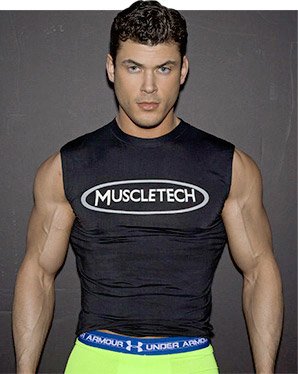
James Pulido
Need help figuring out how many calories to eat? MuscleTech (Note that multiplying your bodyweight by 20 results in a high calorie estimate specific to building mass. Many maintenance calorie estimates are closer to body weight multiplied by 15. If the result of multiplying your bodyweight by 20 seems incredibly high given what you know about your body, you can err on the conservative side and multiply by 16-18.) As a starting point for calorie composition, Pulido recommends dividing up your macro split by taking in close to 1.5 grams of protein and at least 2 grams of carbs per pound of body weight. The rest of your daily allowance, which should account for 15-35 percent of your total calorie intake, should go toward dietary fat. "Fats are important for hormone balance, including testosterone production, which is critical for building muscle mass," Pulido says. You want to grow, I know, but it's important to plan your training split before attacking the gym like a growth-crazed banshee. One of the first things you should do is organize your workouts so you aren't training the same muscle group two days in a row. After all, muscle doesn't grow in the gym; it grows with adequate rest and ample nutrition. "Tearing down a muscle group two days in a row won't produce growth in that area," says aspiring bodybuilder Jesse Hobbs. "If your muscles are sore from the previous day, you won't get the best results from your session." Unless you're following a very specific or advanced training protocol, you should generally give a muscle group 36-48 hours to recover before training it again. So, if you train chest and triceps on Monday, give yourself Tuesday and possibly all of Wednesday to recover before training either body part again. Planning your program carefully will ensure maximum results without pushing you to the point of overtraining. As you structure your training program, note the difference between primary muscle groups and secondary muscle groups. "Primary muscle groups are your bigger muscles [like legs and chest] that don't need to be trained more than once a week unless you're trying to bring them up," says Hobbs. "Secondary muscle groups like your biceps, triceps, traps, calves, and abs can be trained twice per week and still recover fully." If you're really trying to build big arms or carve killer abs, train those muscle groups twice per week. For example, you might train biceps with back on Monday, triceps with chest on Tuesday, and then train both biceps and triceps together on Friday. If you want to build muscle, lifting heavy is an important element in the equation, and compound lifts like the squat, bench press, and deadlift allow you to lift the most weight. Quite frankly, if you aren't squatting, bench pressing, or rowing, you're missing out. "I always stick to the basics," explains Pulido. "Using compound movements causes the greatest hormonal response and allows me to lift as much weight as possible." Personal trainer Nick Twum is also quick to emphasize the importance of deadlifts, which he believes are one of the best muscle-building movements you can do. Deadlifts are a great exercise for overall muscular development. They'll help you build a big back, round glutes, strong legs, and big forearms, while furthering shoulder and trap development. It's important to get enough food, but you should focus on more than just quantity. Aim to eat calorie-dense foods that will help you get thick. Men's physique competitor Ed Honn calls them "bro" foods. "Eat a variety of tried-and-true bodybuilding foods that will help you put on serious muscle mass," he says. Some of Honn's favorites include chicken breast, bison, sweet potatoes, oats, Ezekiel bread, avocado, almond butter, and coconut oil. When it comes to his own diet, Ed keeps his protein levels constant year-round and adjusts carbs and fats depending on his goals. When it's time to seriously add some mass, it's time to up the carbs and fats. If you're always lifting in the same rep range from workout to workout, it's time for a change. In fact, you can even work in multiple rep ranges and intensities in the same workout. "I prefer to hit the basic compound movements such as squats, presses, and deadlifts using a 5-8 rep range," says Honn, "and then move to a higher 8-12 rep range for accessory moves." This setup allows Honn to experience both gains in size and strength, producing optimal results. "For finishers, the reps can be anywhere from 15-100 reps depending on the protocol you're using," he adds. Ladies, take note: You need to work in multiple rep ranges, too. "I've noticed that many women tend to get stuck in the 12-15 rep range," says personal trainer Lindsay Cappotelli. "It wasn't until I started lifting in the 5-8 rep range that I really saw results." "It's very foolish to try and train as hard as possible day in and day out," advises Honn. "If you're feeling beat down, take a few days off or include a deload week in your training plan." Listen to your body. If you have a training day scheduled on paper but feel like rubbish, a day off focused on quality nutrition and adequate rest might actually improve your results. After all, you damage muscle in the gym; you build it with quality rest and nutrition. Pushing through when you're overly tired can be a recipe for disaster or injury. To help his recovery, Honn focuses on getting adequate sleep, eating sufficiently to fuel his hard training sessions, and taking time to stretch and foam roll. "Sure you can train hard, but can you recover hard?" he asks. Keep that question in mind as you go through your workout program. IFBB figure pro Elissa Martis also boosts her recovery capabilities with ongoing stretching sessions, and even recommends regular massage. "I find it beneficial to maintain flexible muscle tissues through stretching, foam rolling, regular massages, or seeing an Active Release Techniques (ART) specialist to break up muscle adhesions." Lindsay Cappotelli ensures she's consistently making progress by simply tracking her workouts online or in a training journal. "I like to log the exercises I performed, the weight lifted, the reps done, and the rest I've taken between sets, so I always know where I stand," she explains. "Since muscles growth is a constant challenge, I'll mix up my workouts by adding more weight, decreasing the rest between sets, or adding an additional rep or two." Lindsay likes to plan her workouts 4-6 weeks in advance, so she's never entering a stale zone and is constantly getting stronger. You don't always have to train harder; sometimes, you need to train smarter. To avoid plateaus, natural bodybuilder Justin Robbins recommends regular training changes. You don't have to fully abandon your training program every week, but you can make small changes. "Never do the exact same exercises two weeks in a row," Robbins says. "Vary the grips, use different machines, or try something new altogether in order to [focus on] the target area." If you're still not preparing your meals ahead of time, you are behind the game when it comes to building muscle. "If you have the right meals available, there should be no excuses to stray from your diet," says Robbins. "Never miss meals or you'll see slow to no progress." Instead of cooking all of your meals every day of the week, set aside one day to prepare food in bulk. Sunday works well for many people. Shop, cook, and then portion out your food in Tupperware. When it comes time to leave for work every morning, you'll have your food ready to roll! Check the Bodybuilding.com Recipe Database for great meal ideas. Another important muscle-building tip is to focus on your lifting tempo. "Time under tension for all movements is key," says Robbins. "When in doubt, slow down the movement and be strict on the form, especially during the negative portion of an exercise." If you really want to build muscle during the eccentric (lowering) portion of a lift and increase the total time under tension, count to five when lowering the weight. You'll cause a lot of muscular damage that can lead to tremendous growth. Don't rush through your exercises or focus on simply getting them done. "Mind-muscle control is most important for me during each rep, to build muscle," says muscle model and WBFF pro Eiren Gauley. "Focus on the negative of each rep and squeeze your muscles hard to achieve maximum time under tension." Robbins further recommends that you come just short of lockout for all movements in order to ensure you are keeping stress on the target muscle while working through the full range of motion. The period before, during, and after your workouts—also known as the peri-workout period—is a perfect time to take supplements designed to enhance your performance and recovery capabilities. "I'm a firm believer in pre-workout, intra-workout, and post-workout supplementation," says Nick Twum. Caffeine is one of his staple pre-workout ingredients, usually in the form of coffee. "It fires up the nervous system, so it's perfect for heavy lifting, and it helps you feel focused and energized," Twum says. He likes to stir in a few extra supps, as well: one gram of agmatine sulfate, or a few grams of citrulline malate, to support a superior muscle pump; 5 grams of creatine monohydrate; and a small serving of carbs to boost his energy levels and restore muscle glycogen. During his workout, Twum sips branched-chain amino acids (BCAAs). "BCAAs are a must to reduce catabolism and increase protein synthesis," he explains. Nick takes 10 grams of BCAAs, often with additional carbs, to keep his muscles full. Post-workout, Twum finishes off with two scoops of NitroTech, up to 50 grams of supplemental carbohydrates for even faster recovery, and a hefty serving of extra glutamine and creatine when necessary. If you don't want to use individual ingredients, opt for an overall pre-workout product. Coach Jason Dwarika swears by MuscleTech Nano Vapor to supercharge his training sessions. When asked about her secret for success, fitness competitor Danielle Beausoleil takes a different approach. "Despite what some believe, achieving your fitness goals is not 70 percent diet and 30 fitness, or vice versa," she says. It's 100 percent commitment to both your fitness and diet." Without consistent commitment to a solid nutrition plan and workout routine, you'll be hard-pressed to see any results. Yes, it's cliché, but consistency really is key. Beausoleil's advice is simple, but essential: Choose a proper routine that's suitable for you and your needs. While it's always best to get your nutrients from whole foods, sometimes you can't get all the micronutrients you need from your regular diet. "Vitamins and minerals are helpful for anyone, even those who do eat a good diet," says Beausoleil. She focuses on a high-quality multi and an omega-3 supplement, as well as added magnesium and zinc as her training intensity increases. "A greens powder can also help support your immune system, so it can be good for those doing high-volume, intense training as well," she says. As you progress on your mass-gain journey, watch out for lagging muscle groups. If there's an area you really want to prioritize, it's best to have a training plan for that specific muscle group. "When there is a particular muscle group that I really need to focus on, I like to lift a little lit heavier than usual, lifting roughly 6 working sets for 6 reps each," explains fitness model Tricia Ashley Gutierrez. "Then, if that muscle really needs more work, I like to come back three days later and train that same muscle group using higher-rep isolation movements." By doing a little more volume and working your target muscle with a variety of stressors, you can help it catch up with the rest of your body. You can also consider upping your training frequency for that particular muscle, to give it even more volume per week. Don't think of supplements only in terms of performance enhancement, but also in terms of helping you meet your calorie intake. "If you are trying to build muscle, and find it hard to reach your daily calorie requirements, a quality weight gainer is a great way to hit those numbers," says Pulido. A high-quality weight gainer will include protein, carbohydrates, some fat, and even additional micronutrients and performance-based ingredients. Pulido recommends Mass-Tech, which he's been using when necessary for years to squeeze more calories into his day.Plan Your Workouts Very Carefully

Jesse Hobbs
Prioritize Accordingly
Include Plenty Of Compound Movements
Choose Calorie-Dense Foods

Ed Honn
Change Up Your Rep Ranges
Recognize the Importance of Recovery
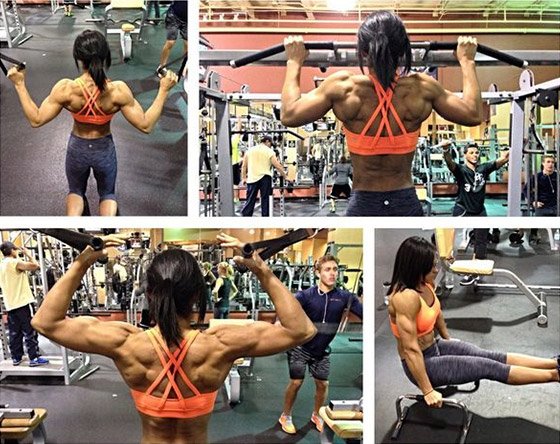
Elissa Martis
Track Your Training Sessions
Tweak Your Workout Routine Regularly
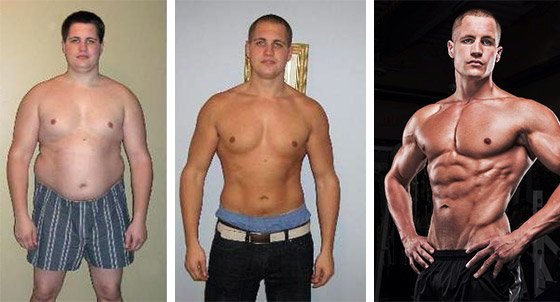
Justin Robbins
Prep Your Meals
Know Your Tempo
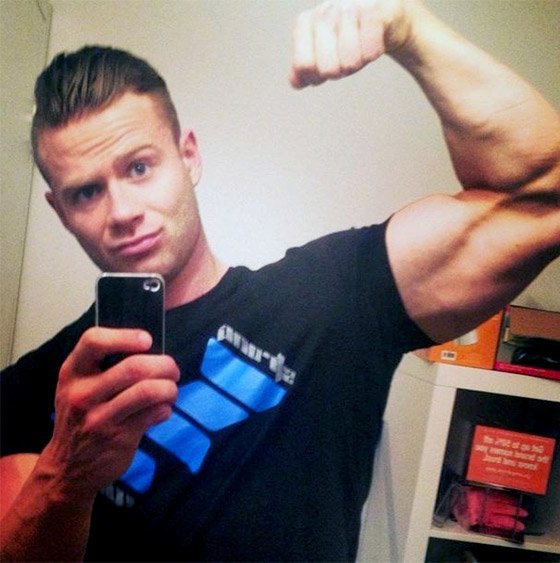
Eiren Gauley
Supplement Wisely Around Your Workout
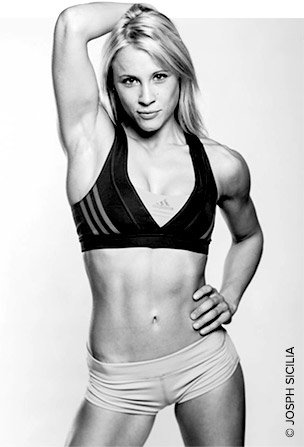
Danielle Beausoleil
Commit to Fit
Take A Multivitamin
Know Your Weak Spots
Supplement Your Calorie Intake
